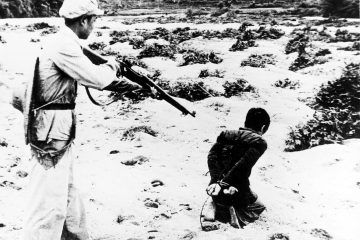Frank Dikötter in The New Republic:

China today, for any visitor who remembers the country from 20 or 30 years ago, seems hardly recognizable. One of the government’s greatest accomplishments is to have distanced itself so successfully from the Mao era that it seems almost erased. Instead of collective poverty and marching Red Guards, there are skyscrapers, new airports, highways, railway stations, and bullet trains. Yet scratch the glimmering surface and the iron underpinnings of the one-party state become apparent. They have barely changed since 1949, despite all the talk about “reform and opening up.” The legacy of liberation is a country still in chains.
Just what was China liberated from in 1949? It wasn’t the Japanese, defeated four years earlier by the Allies, including the Nationalists and their leader, Chiang Kai-shek. It wasn’t colonialism—all the foreign concessions in the country had been dissolved, some as early as 1929. The Republic of China was a sovereign state and a permanent member of the U.N. Security Council.
Nor was it tyranny. In 1912, when China became Asia’s first republic, it had an electorate of 40 million people, or 10 percent of the population, a level of popular representation not reached by Japan until 1928 and India until 1935. Participatory politics, despite many setbacks, continued to thrive over the following decades. When the National Assembly met in May 1948, upwards of 1,400 delegates from all parts of China adopted a constitution that contained an elaborate bill of rights.
More here.
